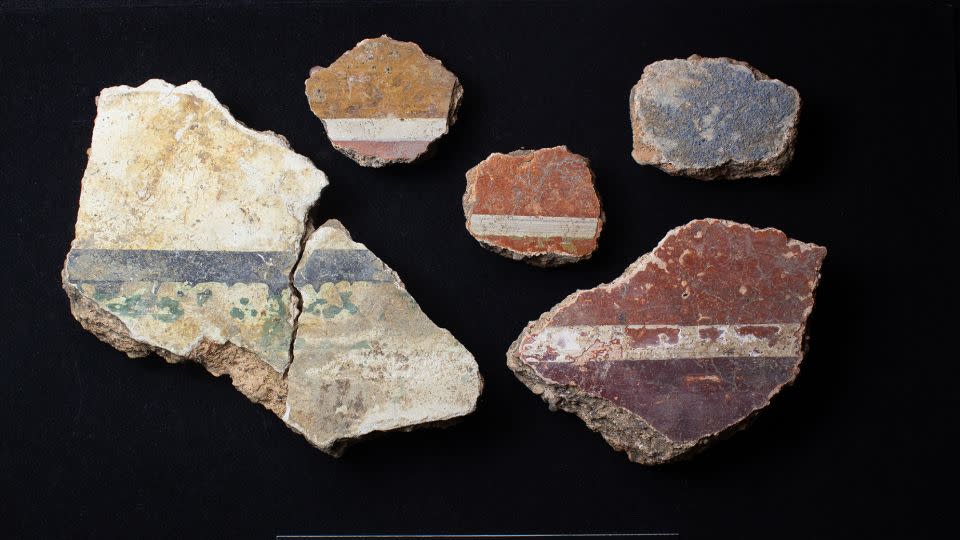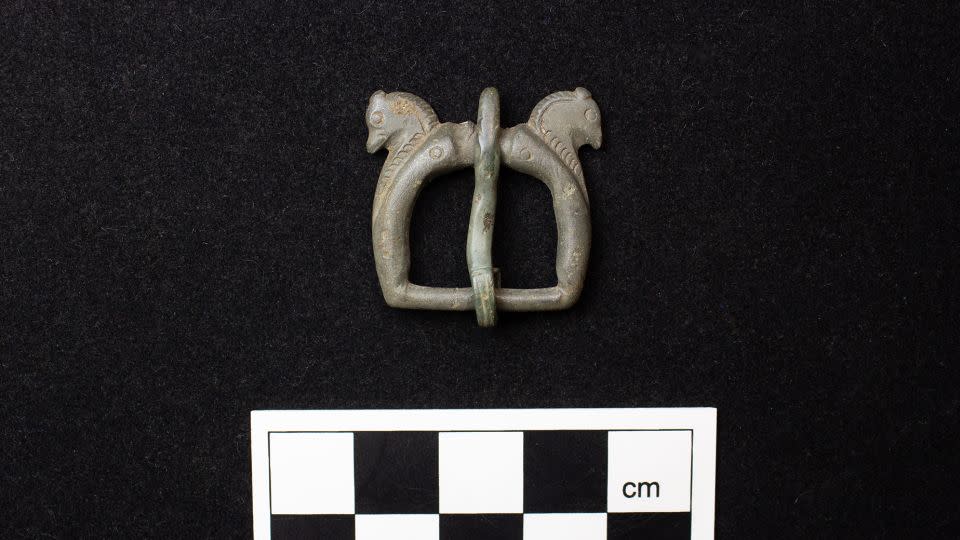‘Remarkable’ Roman villa discovered under housing development
Archaeologists have unearthed a “remarkable” Roman villa complex on a housing development site in a small English village.
The complex was decorated with painted plaster, mosaics and there was a collection of tiny, tightly-coiled lead scrolls suggesting some sort of ritual or pilgrimage might have taken place there, according to a press release.
The villa in Grove would have been “central for this area of Oxfordshire,” Francesca Giarelli, project officer for Red River Archaeology Group and the site’s director, told CNN on Thursday.
She described a building that likely had multiple levels. The structure, which stretched across 1,000 square meters (10,800 square feet) on just the ground floor, was probably visible for miles, Giarelli added.
Hundreds of coins, plus rings, brooches, mosaic tesserae and painted plaster with floral motifs have been uncovered during the year-long excavation, allowing archaeologists to pinpoint a long period of Roman activity at the site from the 1st or 2nd century into the late 4th or early 5th century.

Archaeologists also discovered an aisled building, a bigger and more impressive hall-like structure built after the villa once the family that owned it became richer over time, Giarelli said.
In Roman times, villas were not simply residential dwellings but more like “small administrative centers,” Giarelli explained, often with responsibilities for maintaining roads, planning the crops surrounding it and acting as a “safe space” to store food products during unstable times.
Even in the late Roman period, this particular villa continued to show signs of human activity.
A horse-headed buckle, dated to 350-450 AD, suggests the presence of late Roman elites or someone who still wished to be associated with that period, though such buckles can also be associated with early Anglo-Saxon burials, archaeologists said in a statement to CNN.

Excavating the site, described as “remarkable” in a press statement, began before the housing developers Barratt and David Wilson Homes started their building work and after two evaluation trenches had been dug.
The trenches revealed a “high potential for archaeological presence,” Giarelli said, prompting an archaeological investigation, which began two months before the building work and is still ongoing.
The site still holds some mysteries to unravel in the continuing excavations.
Archaeologists haven’t yet found “where all the people ended up,” Giarelli said, though they believe there is a burial somewhere on the site, and there have been some artifacts, such as the lead scrolls, that point toward a sanctuary present, but still hidden underground.
For more CNN news and newsletters create an account at CNN.com

 Yahoo Sport
Yahoo Sport 





































